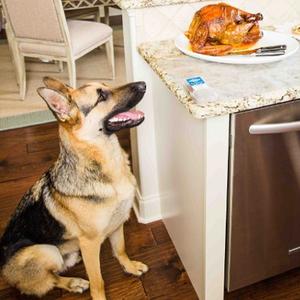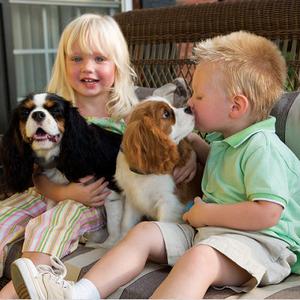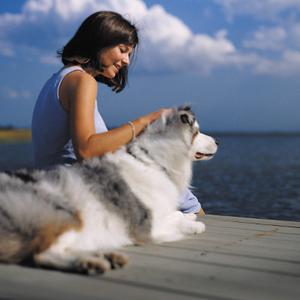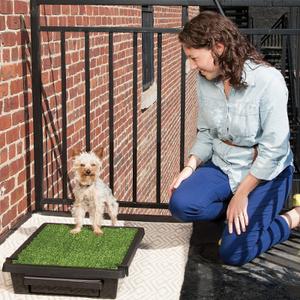By Toni Gibson-Mark, KPA-CTP
Adding a new member to the family can be a very exciting time. Whether it be a brand new baby or a new marriage, it is often heartwarming to see families expand. While family additions might be exciting for the people, our dogs might have a different view. Dogs really thrive with a routine. They enjoy seeing the same people, doing the same daily activities and eating at the same mealtimes.
Adding a new family member might disrupt the routine. Further, the dog might not know how to interact with this new person, so it’s important to consider your dog’s comfort level as the change is occurring. If you’re introducing a new baby to the family, you’ll really want to do some prep work.
Pregnancy requires some accommodations, so your dog has probably already experienced some changes. For example, maybe the dog is being walked by a different person or can’t play-wrestle with you on the floor anymore.  When the new baby comes home, this will definitely be a shock to the dog. To help the dog prepare, bring home a blanket that the baby has been wearing before the baby comes home with you. This will allow your dog to smell the baby before even meeting him or her.
When the new baby comes home, this will definitely be a shock to the dog. To help the dog prepare, bring home a blanket that the baby has been wearing before the baby comes home with you. This will allow your dog to smell the baby before even meeting him or her.
When you arrive home with the new addition, have someone wait outside with the baby while you go in and greet your dog. Chances are your dog missed you while you were away and will be excited to see and smell you. This will also prevent your dog from being so excited initially that he jumps up while you’re carrying the baby.
Babies and children make movements that are very unpredictable for a dog. This can easily make a dog nervous (remember- they thrive on predictability). It’s very important that children are educated on staying calm around the dog and giving the dog his personal space. The Doggone Safe “Be a Tree” program (http://doggonesafe.com/) has excellent educational materials for children on bite prevention.
Additionally, The Family Dog training company (http://www.thefamilydog.com/) has an entire program designed to educate children on dog body language and how to interact with dogs properly. When a new baby is introduced, it is so important to maintain space between the dog and baby. The dog might be interested in sniffing the baby, but one unpredictable movement by the baby might make it an unpleasant experience for the dog. Always supervise your dog whenever he is around the baby. 
Although dogs might be interested in the baby, it is best to create a safe space between them. When a new child is introduced to the family, you should provide a safe space for the dog to have to himself. When the dog is in this spot, nobody should approach him. If this child is old enough, they can offer treats to the dog when the dog is interacting with the family and is supervised. This will make a positive association with the child.
Children should avoid hugging the dog—dogs usually don’t like to be hugged! The key to success when introducing new children to the family is educating them and keeping the children and the dog comfortable.
When you’re introducing new adults to the family, the dog might still be unsettled. They might be used to being the “apple of your eye”, and when someone else is introduced, the shift in attention might not be appreciated. Make positive associations with the new person by having the new person offer lots of treats and praise. Create a fun activity for the new person and the dog to engage in such as training tricks using positive reinforcement or going on walks.
Most of all, just be aware that this is a change for your dog. Many dogs will accept the change with open hearts, while others might be timid or uneasy. Assess your dog’s comfort level and consider how you can make him feel more comfortable, without assuming that he “just needs to get used to it”. If you take your dog into consideration, chances are he’ll be much more accepting of the change for the long run.







